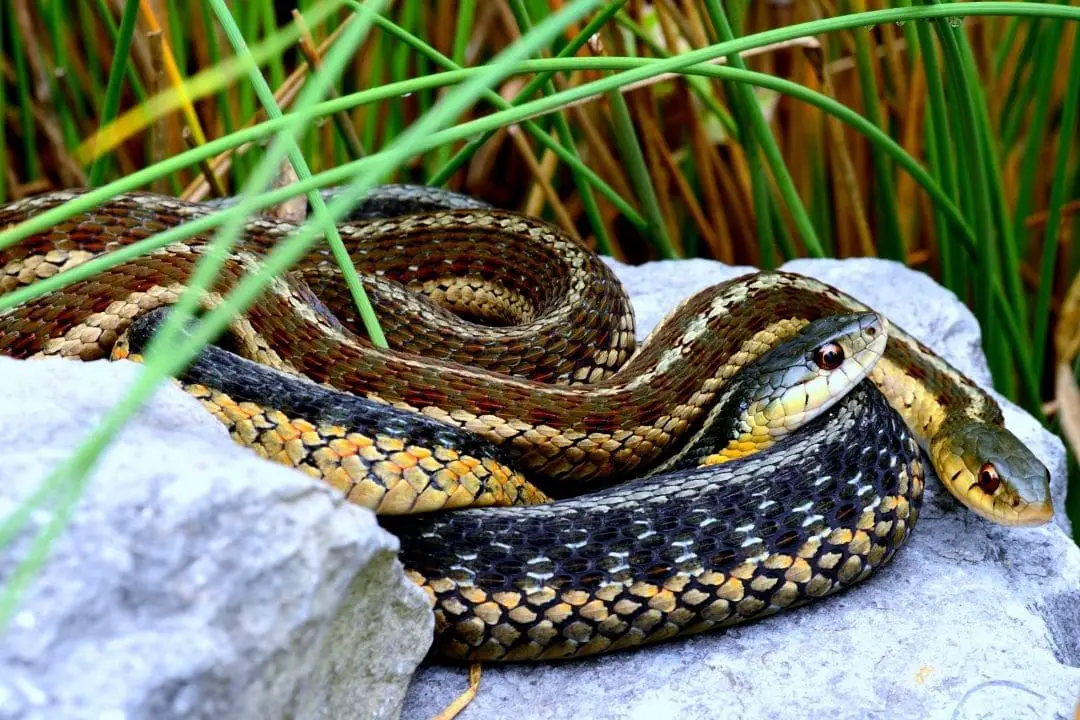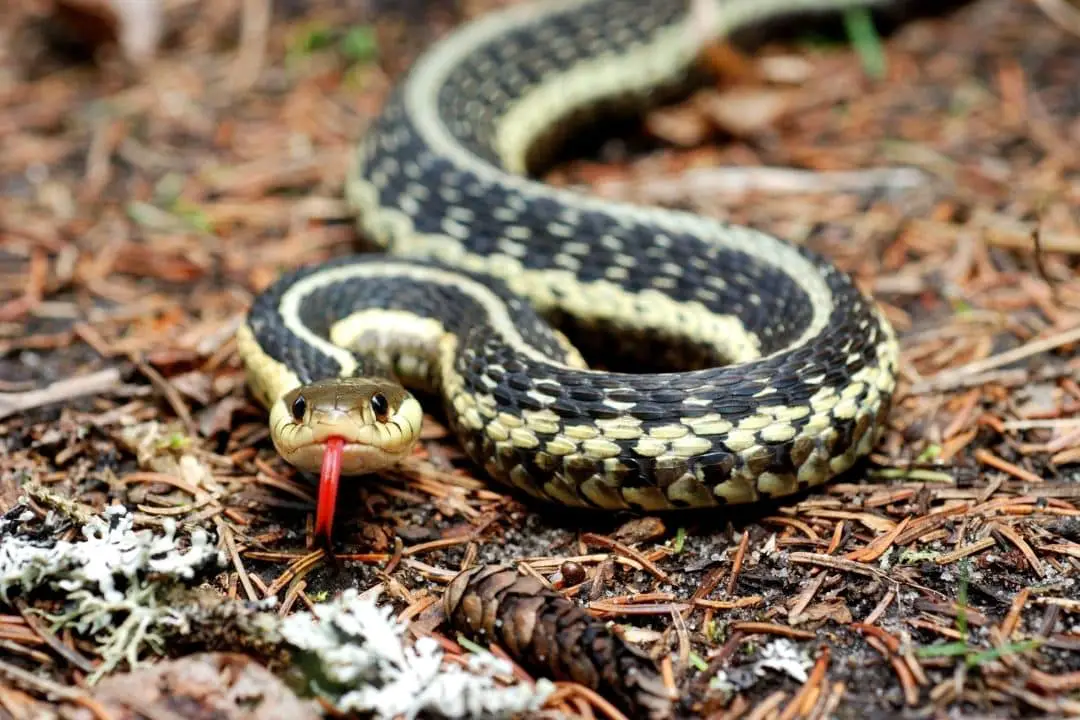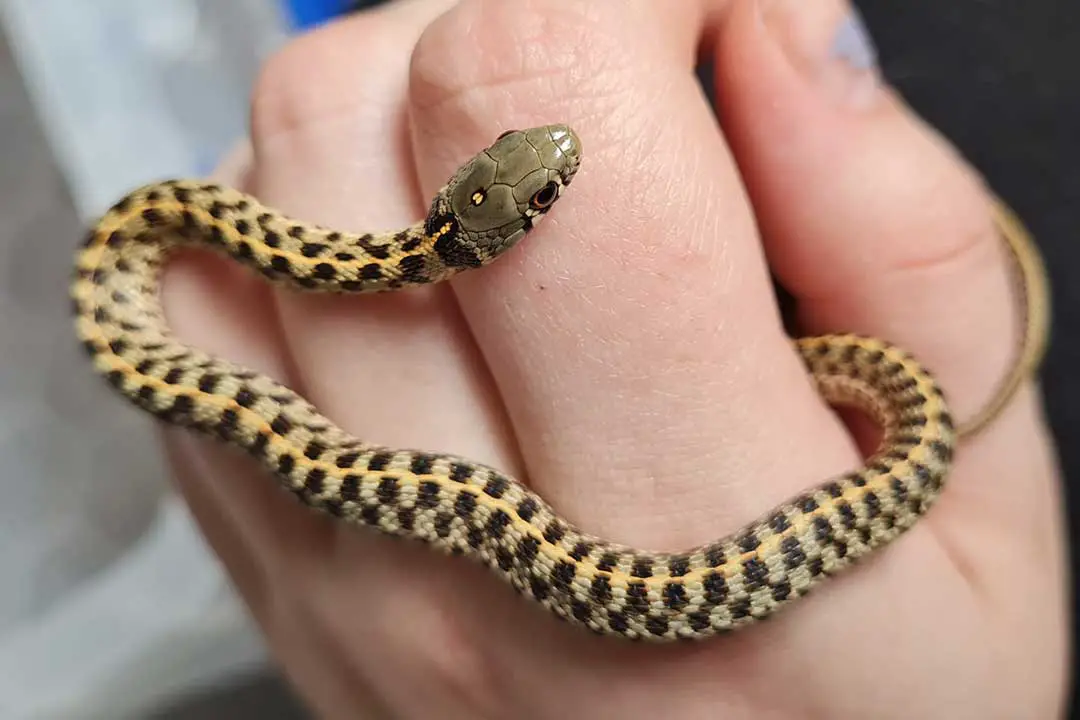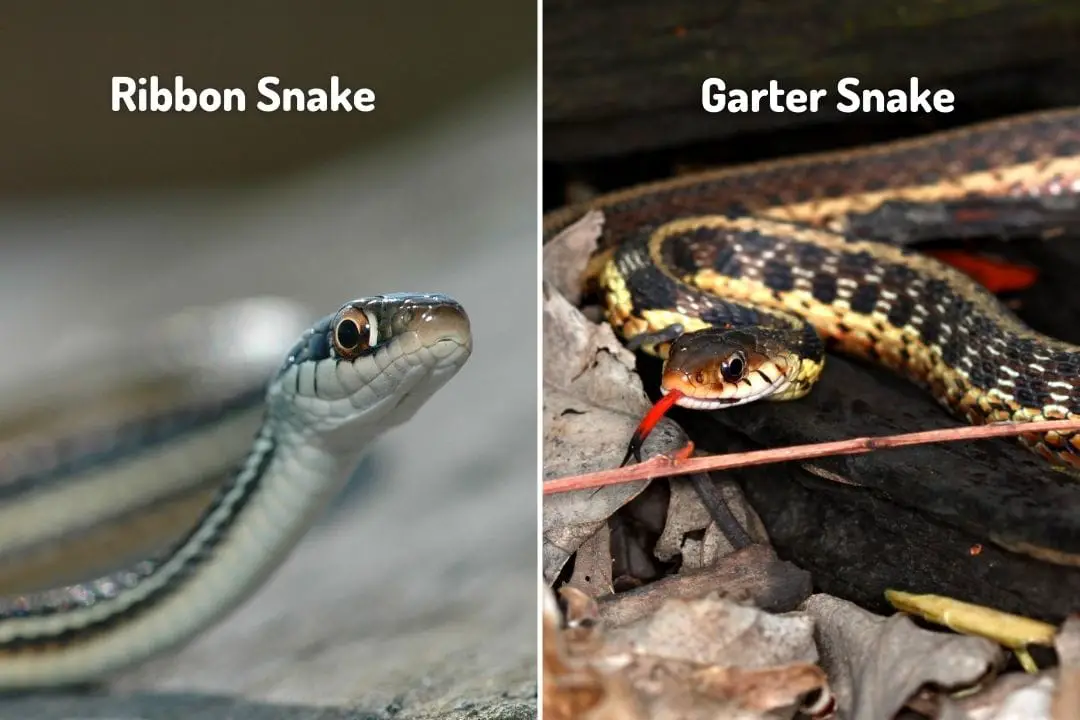Garter snakes are common sights over much of North America.
The genus that includes all garter snake species (Thamnophis) has a wide range that stretches from subarctic Canada all the way down to Costa Rica. Garter snakes are not constrictors, and relatively easy to care for. So you may be wondering:
Are Garter Snakes Dangerous?
As a general rule, garter snakes are not dangerous to humans. While some species have venom, it is not strong enough to harm most humans. They also prefer to flee rather than bite when they encounter humans.
Venom in Dangerous Snakes

Generally speaking, the common venomous snakes that pose a threat to humans are uniquely adapted to hunt with venom. Many use frontal fangs to deliver high doses of venom to prey or in self-defense.
Some species of cobra are even capable of spitting dangerous amounts of venom to ward off potential predators. Others such as the boomslang use rear fangs to deliver venom.
Generally speaking, front fangs are more dangerous to humans. Another factor that determines how well a snake can deliver a dose of venom is how the toxins are excreted.
Vipers and cobras have muscles that squeeze the venom gland. This allows them to deliver more toxins and also choose how much to use.
Venom in Garter Snakes
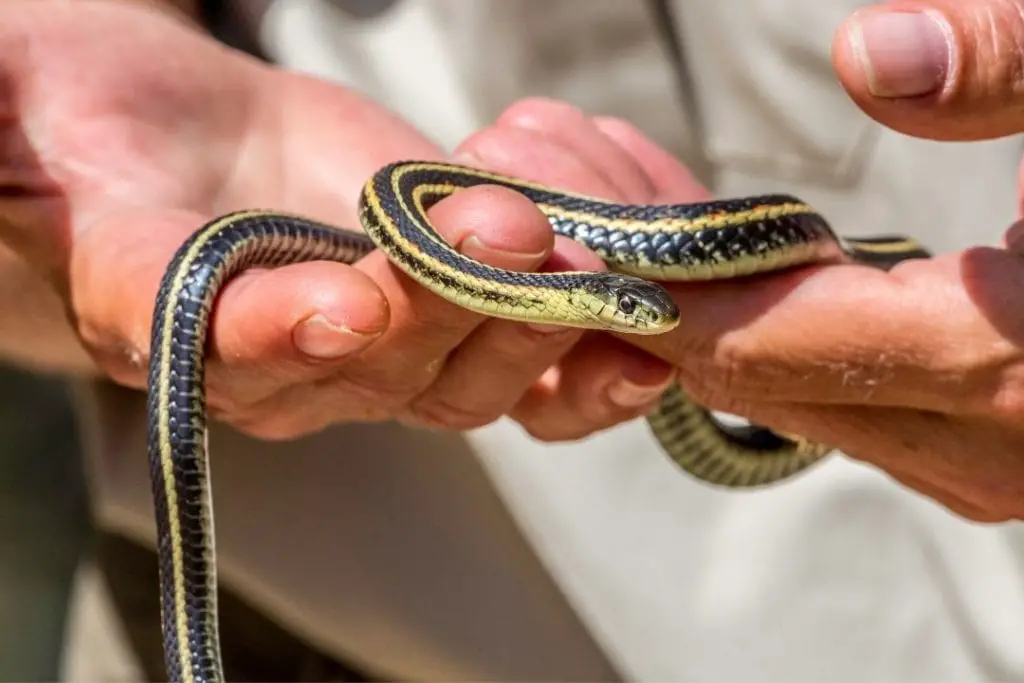
Garter snakes simply do not have this. While the Duvernoy’s gland they possess is the precursor to a developed venom gland, garter snakes do not have the musculature to deliver larger loads of the toxins this gland produces.
This limits the dose a garter snake can deliver. One species of garter snake, the wandering garter snake (Thamnophis elegans vagrans), does possess a venom that is effective in causing internal bleeding in mice.
It is unknown if all of the 35 species of garter snake have venom, but it is likely that many do.
Danger to Humans

Simply put, the dose of the venom is too low to cause real damage to a human. The damage any substance can cause is measured in LD50.
This is the point at which a certain dose will kill half of any test subjects or bite victims. With most deadly snakes, this is a very small amount. In species that can inject venom, even a small dose can cause a reaction.
Many venoms are noted as progressing through the lymphatic system to cause potentially deadly symptoms no matter the location of the bite. However, garter snakes have never produced wide systemic effects. While a prolonged bite by an Eastern garter snake (Thamnophis sirtalis sirtalis) did cause a local reaction in a 13-year-old.
While the subject did experience swelling, discoloration, and coldness, the symptoms stayed localized to the bitten hand. Other bites by the same species prove that this wasn’t an allergic reaction but rather that the child received a large enough dose of the toxin to have a reaction.
The child had a full and rapid recovery, proving that even a prolonged bite will not be dangerous to the average person. This is further backed up by another bite by the wandering garter snake (Thamnophis elegans vagrans).
It was also to the hand and presented very similar symptoms and resolution. At least for humans, the worst you will experience is some swelling and bleeding.
Garter snakes are also small snakes in general. Even the largest species rarely tops 5 feet. They are not constrictors, so they cannot cause damage by squeezing.
Thanks to small teeth, most bites from a garter snake will not cause much damage.
Bites tend to be the last resort with garter snakes since they prefer to flee or will thrash or defecate if you pick them up. Some species of garter snake are considered poisonous since they absorb toxins from amphibians they consume.
However, this is only an issue if someone tries to eat the snake.
Danger to Pets
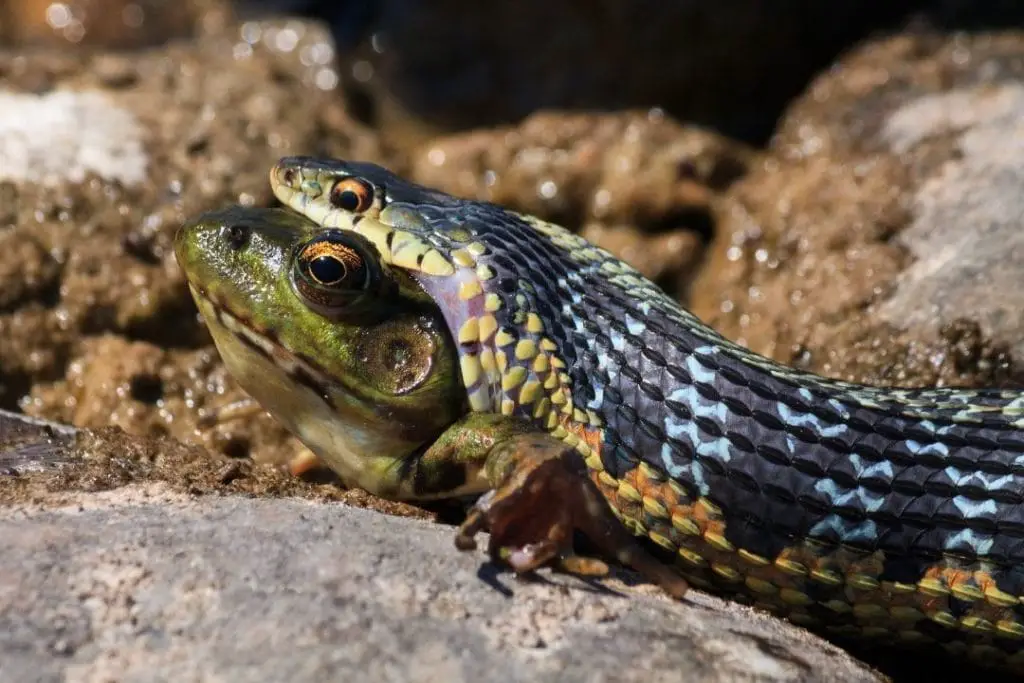
Even pets like cats and dogs will not be harmed by a garter snake. Garter snakes are very small and will prefer to flee. Even if the snake does bite, your pet will likely only have a localized reaction. You may also deal with the smelly musk this species produces if your pet bothers the snake.
While it smells bad, it is not as foul or hard to remove as the spray of a skunk. If your dog or cat eats a garter snake, it may get sick. This is particularly true for the California red-sided garter snake (Thamnophis sirtalis infernalis).
This species frequently preys on the Pacific newt (genus Taricha) which has tetrodotoxin in the skin. It has been proven that the snake will retain the toxin for a few weeks.
This means that your pet could be harmed if they eat this snake much like they would be harmed by eating the newt. If your location has toxic amphibians, it is well worth making sure your pet can’t eat either the amphibian or any predators of the amphibian.
As for smaller pets, your main concern would be if you have a pond with frogs or small fish. Since garter snakes eat aquatic prey, your pond residents could become a meal to a hungry garter snake.
If you have a pet garter snake, you should always make sure to keep your snake away from other pets. If you are taking a pet like a dog outside where there may be garter snakes, just keep them on a leash.
However, even a puppy is far too large to be at risk from a garter snake.
Conclusion
Garter snakes do have a mild venom, but it is not dangerous to humans. Even most animals are safe from the bite of a garter snake.
At worst, expect localized swelling and bleeding from a bite. If you have any questions, please leave a comment below. If you have been bitten by a garter snake, please leave your experience below.
